For one reason or another, the old Spruce Blog website unexpectedly suffered a meltdown and I could not resuscitate it. It was a rather odd meltdown, especially because it didn't let me get in to fiddle around with it and denied me entry entirely. I have a conspiracy theory of how and why this all went down, involving a complex plotline, but I won't share it since I don't know if any mental health institutions read this thing.
So I sat down today and took about five hours to spawn this new blog (mostly create the crane header), which has several benefits - it's free, and following it is now that much easier, as well as posting.
I'm still up in Algonquin Park, where the birds have started moving around and flocking up, but there haven't been much major avian events. We had an adult and a fledgling Barred Owl visit our house the other night -
but otherwise, not too much going on. It is, however, a great time of year to look for odonates (dragonflies and damselflies) and I dedicated a few days last week for that purpose, with Kyle Holloway. We visited the major rivers in the deep South of Ontario - the Thames, Sydenham and Grand Rivers, in hopes of finding some of the specialties that dwell in those watersheds. We were not disappointed.
Our first stop was on the Sydenham, a river famous for having many odes that are not found much elsewhere in Ontario. Immediately, we saw one of our targets cruising along the banks - the lovely Royal River Cruiser.
As we were looking at the cruiser, another dragon flew by and landed not too far from us, and I recognized it immediately and started pointing and yelling, and ran at it in vain attempts of capture. The whole process was Youtube worthy. Eventually I snuck up close enough to one to get a decent photo of one of the most spectacular dragonflies in our province.
It was a stunning adult male Flag-tailed Spinyleg - a Sydenham specialty and one of the dragonflies I had most wanted to encounter here. A few minutes later I managed to capture one and we had the chance to study it in the hand.
An impressive beast, with a characteristic massive tip to the abdomen leading to the English name of this animal.
The cruiser and the spinyleg were both relatively easy targets. Both were rare, but both are large and showy odes that are easy to see and capture when they're around. Our next target was neither.
We arrived at a small, muddy tributary of the Sydenham - an overgrown little stream that intersected with a road and allowed us to follow it. It was painful work, but if we found our target here it would certainly be worth the cuts and scrapes. Suddenly, I saw it. Like a ghost, a large, black dragonfly with shining green eyes slowly flew past Kyle and I and further down the river.
And so the wait began. After 45 minutes of standing knee-deep in water, with only fleeting sightings of our target, we decided to give up and head back. Then, as if to taunt us, two appeared, and PERCHED! Certainly we would have them now.
I crept up to my target and swung, but hit a tree instead and watched painfully as the thing took off and away, never to be seen again. Kyle was more fortunate.
A Mocha Emerald. As a rule, Emeralds of the genus Somatochlora and tediously hard to see, and even harder to catch. They tend to be uncommon even in the core of their range, and their tendency to fly high and in the shade adds to the challenge. We were pretty happy with this one, a species restricted to the far South of our province. A big thanks to Peter Burke for providing us with the locales where we found all these beasties - it would have been very difficult otherwise!!
On our way back home, we stopped by the Thames and were treated to a wide variety of beautiful damselflies.
American Rubyspot
Blue-ringed Dancer
Blue-tipped Dancer
Blue-fronted Dancer

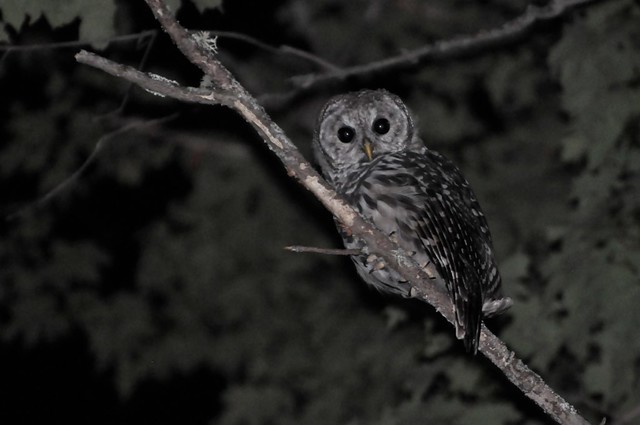
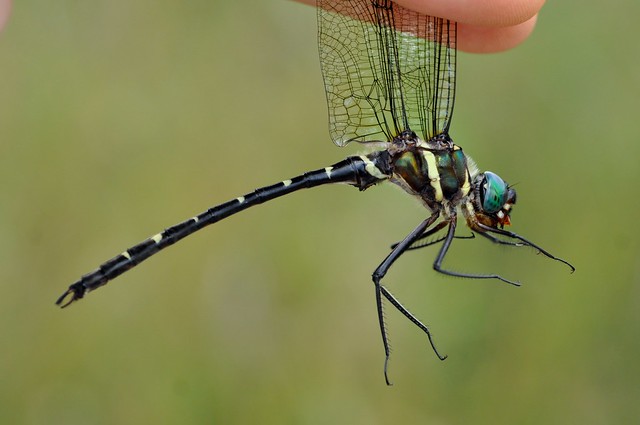
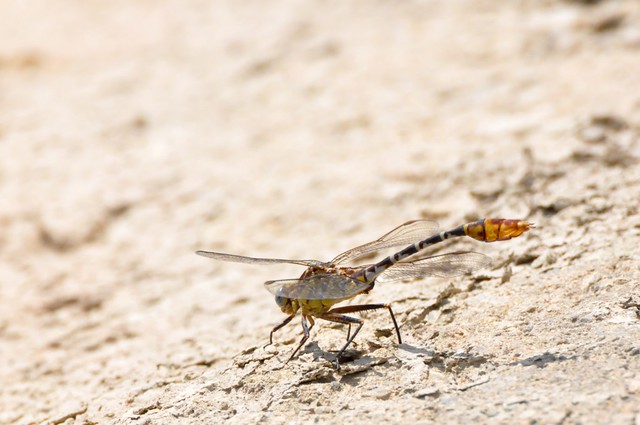
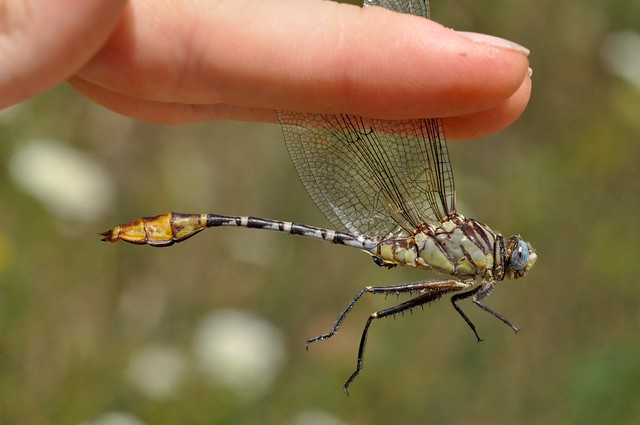
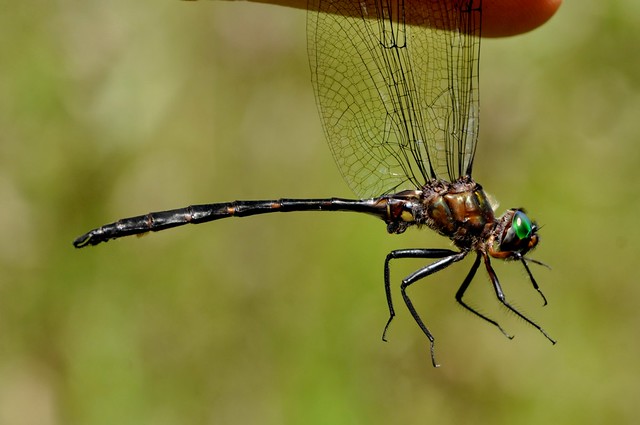
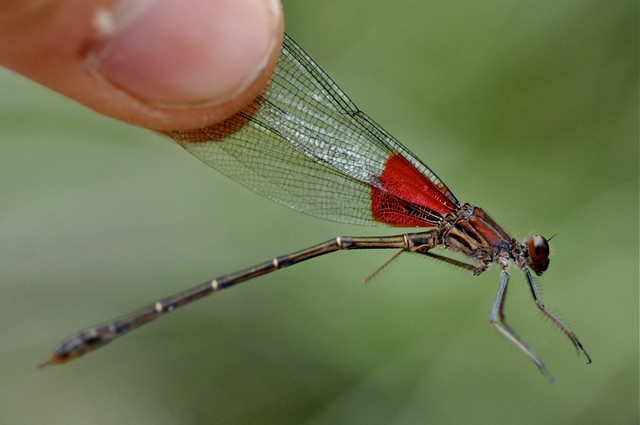

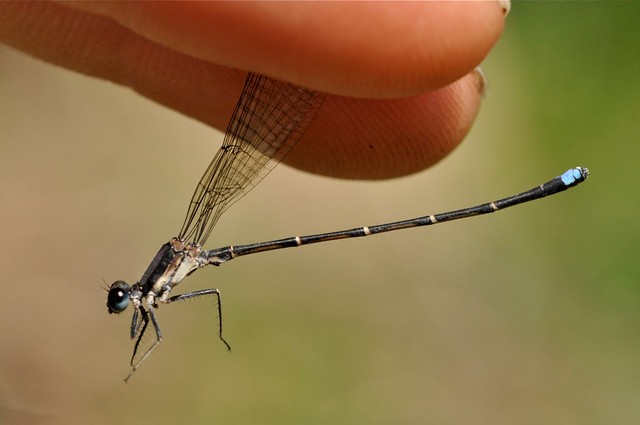
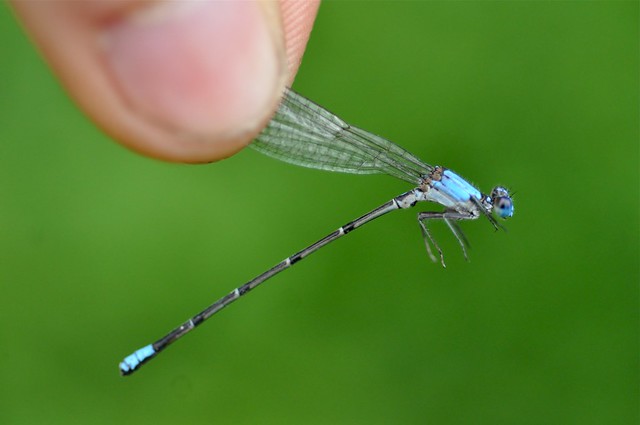
Those are some fantastic odes! (And some fantastic photos, too!) I did not know we had such beautiful creatures in the "deep south". Congrats on the new blog!
ReplyDelete